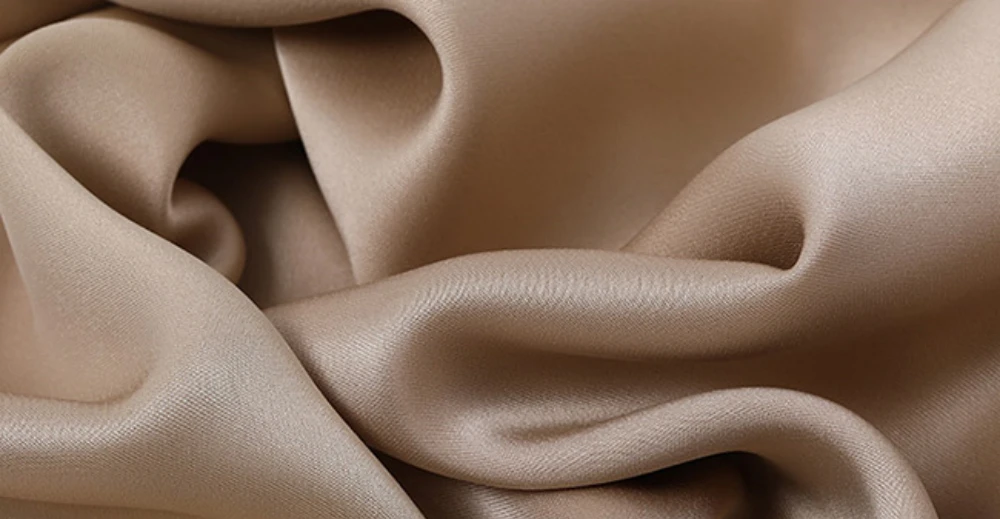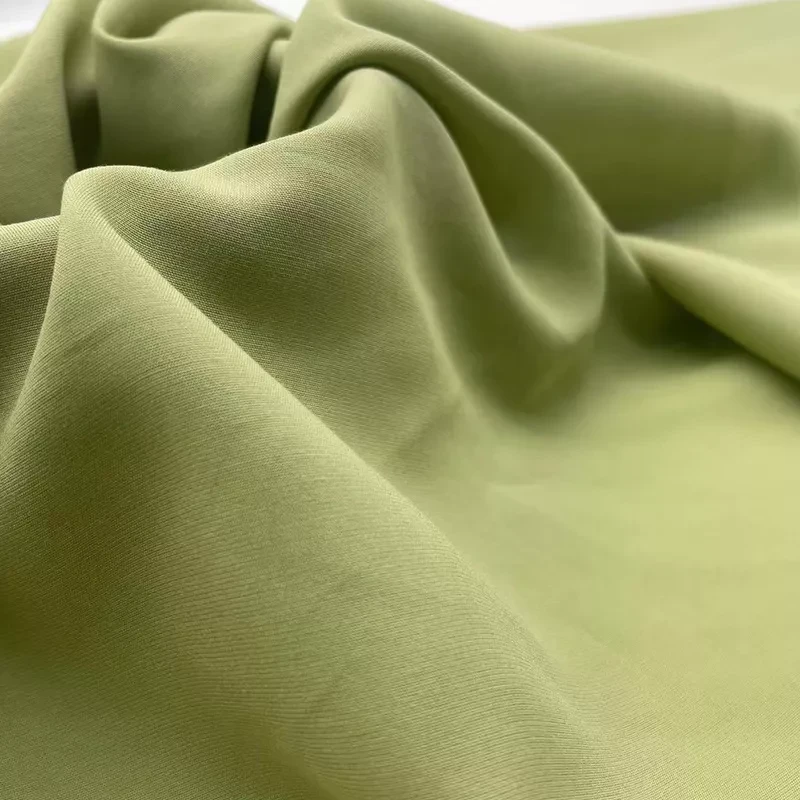If you wonder if acetate is a good fabric for your wardrobe or home, you’re in the right place. You get a fabric with a luxurious appearance, soft drape, and vibrant color options. Is acetate a good fabric when you want something cost-effective?
Absolutely. Is acetate a good fabric for people who care about the environment? You’ll appreciate its biodegradability. Is acetate a good fabric for comfort and easy care? Many people find it easy to wear and maintain. Check out the table below to see what makes acetate stand out:
Fact | Description |
|---|---|
Luxurious Appearance | You enjoy a silk-like feel at a fraction of the cost. |
Cost-Effectiveness | Is acetate a good fabric for saving money? Yes, thanks to low production costs. |
Biodegradability | You support eco-friendly choices with acetate’s ability to break down naturally. |
Drape Ability | Is acetate a good fabric for stylish folds and creases? It excels in creating elegant shapes. |
Wide Range of Colors | You get endless color possibilities for your unique style. |
Key Takeaways
Acetate offers a luxurious feel similar to silk at a lower cost, making it a stylish choice for your wardrobe.
This fabric is biodegradable, supporting eco-friendly practices and reducing environmental impact.
Acetate is easy to care for; gentle washing and air drying help maintain its quality and appearance.
The fabric’s moisture-wicking properties keep you comfortable, making it suitable for both everyday wear and special occasions.
Friendtex ensures high-quality acetate products, combining comfort, style, and sustainability in their fashion lines.
Comfort of Acetate Fabric

Softness and Feel
When you touch acetate fabric, you notice its smooth, soft texture right away. Many people say it feels almost like silk, but with a bit more structure. This means you get the silk-like qualities you love, plus garments that hold their shape. If you compare acetate to other fabrics, you’ll find some clear differences:
Silk feels extremely soft and luxurious against your skin.
Acetate mimics silk’s softness, but it’s a bit sturdier, which helps clothes look crisp and elegant.
Polyester is versatile, but it doesn’t match the softness of acetate or silk.
You might enjoy how acetate fabric feels cool and pleasant, especially in warmer weather. The fabric absorbs moisture well, so you stay comfortable throughout the day.
Designers often choose acetate for its silky luster and wrinkle resistance. These advantages make it a favorite for premium garments that need to look and feel great.
Friendtex uses high-quality acetate in many of its fashion lines. You get comfort and style, whether you’re wearing pajamas, dresses, or shirts. The smooth texture and lightweight feel mean you can move easily and look polished.
Tip: If you want a fabric that feels soft and looks elegant, acetate is a smart choice for your wardrobe.
Uses in Fashion
You see acetate in many stylish pieces. Fashion designers love it for its beautiful drape and vibrant colors. Here are some common garments made from acetate fabric:
Wedding dresses
Evening attire
Graduation wear
Women’s underwear
Slip dresses
Pants
Coats
Shirts
Acetate works well for both everyday wear and special occasions. Its moisture resistance and lightweight nature keep you comfortable, even when you dress up. Friendtex’s expertise in using premium acetate means you get clothing that combines comfort, style, and durability.
If you want to enjoy the benefits of a fabric that looks and feels luxurious, acetate offers plenty of options. You can find it in everything from elegant gowns to cozy pajamas, all designed to help you feel your best.
Durability and Longevity
Strength and Wear
When you choose acetate fabric, you probably want to know how it stands up to daily life. You get a material that resists shrinking, especially if you dry-clean it. After washing, the acetate dries quickly and keeps its shape. You don’t have to worry much about your clothes shrinking or losing their fit.
Here are some things you’ll notice about acetate:
It resists shrinking, so your garments stay true to size.
Acetate fabric dries fast, which makes laundry easier.
You can reshape acetate if needed, keeping your clothes looking fresh.
However, you should know about some disadvantages. Acetate is not as strong as other fabrics. It can be more susceptible to wear and tear, especially if you use it often. Pilling is less common, but the fabric may not last as long as cotton or polyester in heavy-use situations.
If you want a fabric that feels luxurious and looks elegant, acetate offers clear advantages, but it may not be the best choice for rough activities.
Friendtex understands the importance of durability. The company uses strict quality control and premium manufacturing standards to make sure every piece meets high expectations. You get acetate garments that look great and hold up well, thanks to careful production and attention to detail.
Care Tips
Taking care of acetate fabric is simple if you follow a few steps. You should avoid harsh washing methods. Hand-washing or gentle machine cycles work best. Always use cool water and mild detergent. After washing, hang your acetate items to dry. This helps prevent damage and keeps the fabric smooth.
Here’s a quick care checklist for acetate:
Wash gently with cool water.
Use mild detergent.
Hang to dry, avoiding direct sunlight.
Store in a cool, dry place.
Friendtex provides care guidance for all its acetate products. You get easy-to-follow instructions, so your garments stay beautiful and last longer. With the right care, you enjoy the comfort and style of acetate for many seasons.
Is Acetate a Good Fabric for Easy Care?

Washing and Drying
You might wonder if acetate is easy to care for at home. The answer is yes, as long as you follow a few simple steps. Most acetate garments do best with gentle handling. You can hand-wash acetate fabric in cold or warm water. Use a mild detergent and avoid soaking colored items. Never twist or wring out the garment, since this can damage the fibers. Instead, gently press out excess water.
Wash acetate in cold water on a delicate or hand-wash cycle.
Use a gentle detergent.
Air-dry only; avoid machine drying.
Hang or lay flat to dry, away from direct sunlight or heat.
Acetate dries quickly, so you don’t have to wait long before wearing your favorite piece again. If you need to iron, use a cool setting and a pressing cloth. Press on the back side while the fabric is still slightly damp. This keeps your clothes looking smooth and fresh.
Tip: Dry cleaning is best for structured or delicate acetate items. Friendtex always provides clear care instructions for each garment, so you know exactly how to keep your clothes in top shape.
Maintenance Advice
Taking care of acetate means paying attention to a few details. You should avoid excessive friction, which can cause snagging. Air out your garments after wearing them to keep them fresh. If you want to refresh your clothes, use sprays made for delicate fibers.
Store acetate away from alcohol-based products like perfume.
Fold and store garments flat instead of hanging.
Handle with care to prevent snagging.
Spot clean gently if needed, and dry quickly.
Acetate fabric resists wrinkles well, but you can steam or iron on the lowest heat setting if needed. Always use a pressing cloth to protect the fibers. If you notice water spots, dab gently and let the area dry. Hand washing and air drying help prevent shrinkage and keep your clothes looking new.
Compared to silk, acetate is easier to maintain. Silk needs more delicate care and is sensitive to sunlight and sweat. Polyester is tough, but acetate offers a softer feel and dries faster.
The main disadvantages come from improper care, which can make acetate brittle or shorten its lifespan. Friendtex’s guidance helps you avoid these issues and enjoy your garments longer.
Acetate and Sustainability
Environmental Impact
You might wonder how acetate fabric fits into your eco-friendly lifestyle. Acetate comes from cellulose acetate, which is made using wood pulp. This means you get a fabric that is partly plant-based. Many people choose acetate because it is biodegradable and breaks down much faster than synthetic fabrics like polyester.
Here are some important facts about the environmental impact of acetate:
Acetate is biodegradable, so it does not linger in landfills for years.
Cellulose acetate has a lower carbon footprint than polyester.
Bio-acetate uses more renewable ingredients and is fully biodegradable, making it a more sustainable material.
The production of acetate involves chemicals, which can affect the environment if not managed properly.
Compared to lyocell, acetate is less eco-friendly because lyocell uses a closed-loop process that reduces chemical waste.
You can see how quickly cellulose acetate breaks down in different environments:
Environment | Time Frame for Decomposition | Observations |
|---|---|---|
Marine Environment | Maximum of 3 months | All tested cellulose acetate products disintegrated due to microbial activity, similar to cellulose film and cotton fabric. |
Closed System | 4-5 days | >90% degradation for cellulose acetate with a degree of substitution (DS) of 1.7. |
Open System | 27 days | >70% degradation for cellulose acetate with a DS of 1.7; 10 weeks for DS of 2.5. |
You should also know about some environmental concerns. Chemicals used in cellulose acetate production, like lithium acetate, can affect soil and water if not handled safely.
High concentrations may disrupt aquatic life and reduce crop yields. Air pollution can happen if factories do not control emissions. Many regions do not have strict rules for lithium disposal, which can lead to contamination.
Friendtex’s Sustainable Practices

If you care about choosing a sustainable fabric, you will appreciate Friendtex’s commitment to eco-friendly manufacturing. Friendtex uses cellulose acetate sourced from suppliers with FSC® and PEFC™ certifications. This means the wood pulp comes from responsibly managed forests.
Friendtex also follows safe chemical practices. The company uses closed-loop processes, like those found in Naia™, where solvents are recycled and hazardous chemicals are avoided. You get acetate fabric that meets OEKOTEX® 100 standards and does not contain restricted substances.
Here is a quick look at Friendtex’s sustainable practices:
Sustainable Practice | Description |
|---|---|
Sustainable Origin | Wood pulp is sustainably sourced from certified suppliers. |
Safe and Environmentally Sound Chemicals | Closed-loop production recycles solvents and avoids hazardous chemicals. |
Low-Impact Manufacturing Process | The process uses less water and energy, with third-party life cycle assessments. |
Return to Nature | Products are certified for biodegradation in natural environments. |
Friendtex holds certifications like GOTS, Organic 100 Content Standard, and Better Cotton Initiative. You can trust that your acetate fabric comes from a company that values sustainability and quality. Choosing Friendtex means you support a brand that leads the way in sustainable material innovation.
Acetate vs Other Fabrics
Polyester Comparison
You might wonder how acetate stacks up against polyester. Both fabrics show up in modern wardrobes, but they feel very different when you wear them. Take a look at this quick comparison:
Attribute | Acetate (Naia™) | Polyester |
|---|---|---|
Comfort | Soft, breathable, moisture-wicking, hypoallergenic | Less breathable, can feel uncomfortable |
Cost | Generally, it is more expensive due to the sustainable process | Typically lower cost |
Sustainability | Made from sustainably sourced wood pulp, a closed-loop process | Petroleum-based, higher carbon footprint |
Acetate feels softer and more breathable than polyester. You stay cooler and drier, especially on warm days. Polyester costs less, but it can trap heat and moisture. If you care about the planet, acetate comes from wood pulp and uses a closed-loop process, while polyester relies on petroleum.
Silk Comparison
If you love the feel of silk, acetate gives you a similar experience at a lower price. Here’s how they compare:
Property | Silk | Acetate |
|---|---|---|
Texture | Soft, breathable, natural protein fiber | Mimics silk’s texture, semi-synthetic |
Durability | Lower durability, fragile | Less durable, prone to wear |
Price | Generally more expensive, labor-intensive | Cheaper to produce, more affordable |
Silk feels luxurious and natural, but it costs much more than acetate. Acetate mimics silk’s shine and softness, so you get that elegant look without the high price tag. Both fabrics need gentle care, but acetate is easier to find and more budget-friendly.
Did you know? Acetate usually costs between £4 and £11 per meter, while silk ranges from £14 to £38 per meter.
Cotton Comparison
Cotton is a classic choice, but acetate brings something new to the table. Here’s a side-by-side look:
Fabric Type | Breathability | Environmental Impact |
|---|---|---|
Acetate | Good, regulates body temperature and keeps skin dry | Involves harmful chemicals, resource-intensive |
Cotton | Breathable, moisture-wicking, but less effective than acetate | Natural fiber can be sustainable if organic, but it has pesticide and water consumption issues |
Acetate helps regulate your body temperature and keeps your skin dry. Cotton breathes well, but acetate often feels cooler and dries faster. Both fabrics have environmental concerns, but organic cotton and sustainably produced acetate are better choices.
Friendtex offers a wide range of premium fabrics, including acetate, silk, cotton, and more. You can choose the best material for your brand’s vision and comfort needs.
Conclusion
You now know the five key facts about acetate fabric. Acetate stands out for its luxurious feel, vibrant colors, and easy care. Textile experts see a bright future for acetate as more people want sustainable options. When you choose fabric, you often look for:
Comfort and a soft, silky touch
Beautiful drape and shine
Responsible sourcing and eco-friendly practices
If you want premium, sustainable fashion, Friendtex offers you a wide range of acetate and other high-quality fabrics. Your priorities shape your perfect wardrobe.
FAQ
What does acetate fabric feel like?
You’ll notice that acetate feels smooth and silky. It’s soft against your skin and has a gentle shine. Many people say it feels like silk but is a bit sturdier. You get comfort and elegance in one fabric.
Can you machine-wash acetate clothes?
You should avoid regular machine washing. Hand wash or use a gentle cycle with cold water. Always air-dry your acetate garments. This keeps them looking fresh and helps them last longer.
Is acetate fabric good for sensitive skin?
Yes! Acetate is hypoallergenic and gentle. You won’t feel itchy or uncomfortable. It’s a great choice if you have sensitive skin or want a fabric that feels soft all day.
Does acetate wrinkle easily?
Acetate resists wrinkles better than many natural fabrics. You can wear it all day and still look polished. If you see small creases, a quick steam or low-heat iron will smooth them out.


